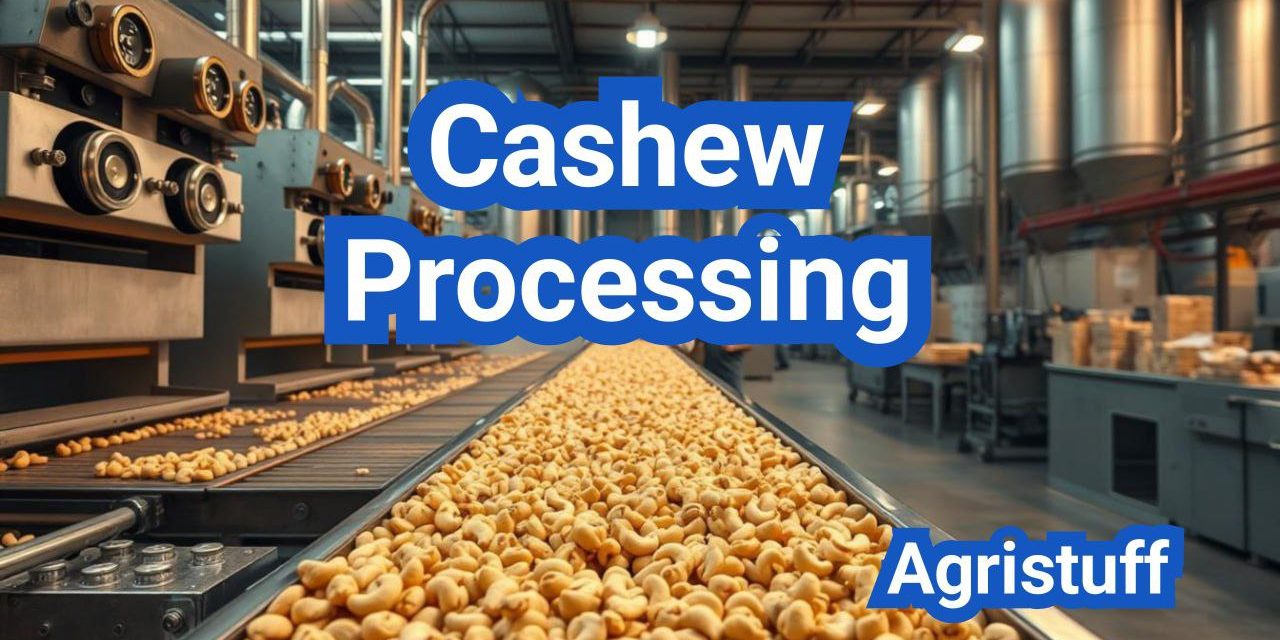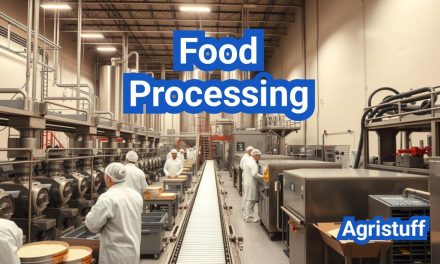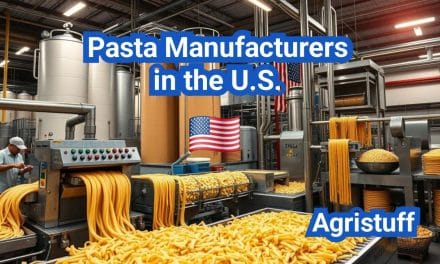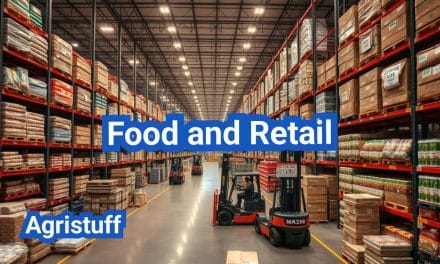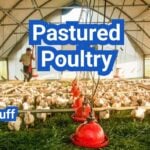Cashew nuts are highly prized for their taste, nutritional value, and versatility, making them one of the most sought-after nuts globally. For U.S. importers, understanding the intricacies of cashew processing is crucial for ensuring quality and compliance with regulations.
The journey from raw cashew nuts to a consumable product involves several stages, including grading, roasting, and packaging. Each step requires specialized equipment, such as a cashew processing machine, to maintain efficiency and quality.
Adhering to cashew kernel grading standards is vital for importers to meet U.S. market demands and regulatory requirements. This article provides an overview of the cashew processing stages, quality standards, and regulations U.S. importers must follow.
Key Takeaways
- Understanding cashew processing stages is crucial for U.S. importers.
- Specialized equipment like cashew processing machines is necessary for quality.
- Cashew kernel grading standards must be adhered to for market compliance.
- Regulations and quality standards are key for successful import.
- Efficiency and quality are maintained through proper processing techniques.
The Global Cashew Industry Overview
The cashew market is witnessing a surge in production and trade worldwide, driven by increasing consumer demand and expanding global supply chains.
Current Market Trends and Production Statistics
The global cashew industry has seen significant growth in recent years, with production statistics indicating a steady increase in output. According to recent data, the global production of cashews has risen substantially, driven by advancements in farming practices and improved supply chain efficiencies.
Cashew production statistics reveal that the industry is becoming increasingly competitive, with several countries emerging as major players in the global market. The demand for cashews is expected to continue growing, driven by their increasing popularity as a healthy snack option.
Major Producing Countries and Their Role in the Supply Chain
Countries such as India, Vietnam, and those in Africa are among the top cashew-producing nations, playing a crucial role in the global supply chain. These countries have developed efficient processing and exporting capabilities, making them key players in the international cashew trade.
The role of these major producing countries is not limited to production; they also significantly influence the global cashew pricing and supply dynamics. Understanding their production capacities and supply chain strengths is essential for navigating the global cashew market.
The U.S. Import Market for Cashews
The United States is one of the largest import markets for cashews, with a significant demand for both raw and processed cashews. The U.S. cashew import market is driven by consumer preferences for healthy and convenient snack options.
U.S. importers source cashews from various countries, with a focus on quality, pricing, and reliability. The U.S. cashew import market is expected to continue growing, driven by increasing consumer awareness of the nutritional benefits of cashews.
Understanding the Cashew Nut Anatomy

Understanding the anatomy of cashew nuts is essential for appreciating their nutritional profile and the importance of proper processing techniques.
Structure of Cashew Fruit and Nut
The cashew tree produces a fruit known as the cashew apple, which is attached to a cashew nut. The cashew nut is actually a seed that is surrounded by a double shell. The outer shell is smooth, while the inner shell is rough and contains a caustic resin. The edible kernel is obtained after removing these shells.
Chemical Composition and Nutritional Profile
Cashew nuts are rich in nutrients, including proteins, healthy fats, and fiber. They are also a good source of minerals like magnesium, copper, and zinc. The nutritional profile of cashews makes them a popular choice for health-conscious consumers.
| Nutrient | Amount per 100g |
|---|---|
| Protein | 18.22g |
| Total Fat | 43.85g |
| Carbohydrates | 30.19g |
| Magnesium | 292mg |
Why Proper Processing Matters
Proper processing of cashew nuts is crucial to remove the shells and the caustic resin, ensuring the kernel is safe for consumption. Proper processing also helps in maintaining the nutritional quality and flavor of the cashews.
Key aspects of proper processing include:
- Careful shelling to avoid damage to the kernel
- Removal of the testa (the thin skin covering the kernel)
- Drying to the appropriate moisture level
- Grading according to size and quality
By understanding the anatomy of cashew nuts and the importance of proper processing, manufacturers can ensure that the final product is not only safe but also of high quality and nutritional value.
Raw Cashew Nut Harvesting and Preparation
Harvesting raw cashew nuts requires precision and care to ensure the nuts are collected at the optimal stage of maturity. The process involves several critical steps that directly impact the quality of the final product.
Harvesting Techniques and Timing
Cashew trees typically produce fruit twice a year, and the harvesting period can last several months. The cashew nut is enclosed in a double shell that contains a caustic resin, which must be handled carefully to avoid damage to the nut and skin irritation to handlers.
The ideal harvesting time is when the cashew apples are fully ripe, and the nuts are mature. This is usually indicated by the color change of the apple and the nut. Harvesting is often done manually, as it allows for a more precise selection of mature nuts.
Initial Cleaning and Sorting
After harvesting, the raw cashew nuts undergo initial cleaning to remove any foreign matter, such as dirt, stones, or broken nuts. This process is crucial for improving the quality of the nuts and reducing the risk of contamination.
Sorting is also an essential step, as it separates the nuts by size and quality. This is typically done using a combination of manual and mechanical methods. The nuts are then graded according to their size, shape, and quality.
| Sorting Criteria | Description | Importance |
|---|---|---|
| Size | Nuts are sorted by diameter | High |
| Shape | Nuts are sorted by their shape and integrity | Medium |
| Quality | Nuts are sorted by their overall quality and appearance | High |
Storage of Raw Cashew Nuts
Proper storage of raw cashew nuts is vital to maintain their quality and prevent spoilage. The nuts should be stored in a cool, dry place, away from direct sunlight and moisture.
The storage facilities should be well-ventilated to prevent the buildup of moisture and reduce the risk of mold and fungal growth. Regular monitoring of the stored nuts is necessary to detect any signs of deterioration.
By following these steps, producers can ensure that their raw cashew nuts are harvested, cleaned, sorted, and stored effectively, resulting in high-quality kernels that meet the requirements of U.S. importers.
Cashew Processing Workflow: From Raw Nut to Edible Kernel

The journey of cashews from raw nuts to edible kernels involves a complex processing workflow. This process transforms raw cashews into a safe and consumable product, ready for distribution and consumption.
Primary Processing Steps Overview
The primary processing steps are crucial in preparing the raw cashews for further processing. These steps include:
- Sorting and cleaning of raw cashews to remove foreign materials and defective nuts
- Soaking or steaming to loosen the shell and facilitate shelling
- Shelling to extract the kernel from the shell
Primary processing sets the stage for the production of high-quality cashew kernels.
Secondary Processing Steps Overview
After the primary processing steps, the cashew kernels undergo secondary processing, which includes:
- Grading of kernels based on size and quality
- Peeling or removing the testa (the thin skin covering the kernel)
- Roasting or other forms of heat treatment to enhance flavor and texture
Secondary processing enhances the quality and appearance of the cashew kernels, making them ready for packaging and distribution.
Quality Control Checkpoints
Quality control is integral to the cashew processing workflow. Checkpoints are established at various stages to ensure that the kernels meet the required standards. These checkpoints include:
| Processing Stage | Quality Control Measure |
|---|---|
| Raw Cashew Receipt | Inspection for moisture content, foreign materials, and defects |
| After Shelling | Check for shell fragments, broken kernels, and testa presence |
| Before Packaging | Final inspection for quality, size, and packaging integrity |
Effective quality control ensures that the final product is safe, nutritious, and meets consumer expectations.
Steam Cooking and Conditioning Process
To achieve high-quality cashew kernels, the steam cooking and conditioning process is indispensable. This critical step in cashew processing not only enhances the kernel’s quality but also facilitates the removal of the shell.
Steam Cooking Equipment and Methods
The equipment used for steam cooking cashews typically includes large, industrial steam cookers designed to handle bulk quantities. These cookers use high-pressure steam to heat the cashews uniformly.
Key Features of Steam Cooking Equipment:
- High-pressure steam generation
- Temperature control systems
- Automated cooking timers
Optimal Cooking Parameters
Achieving the optimal cooking parameters is crucial for effective steam cooking. The ideal temperature and cooking time can vary based on the cashew variety and moisture content.
| Cashew Variety | Optimal Temperature (°C) | Cooking Time (minutes) |
|---|---|---|
| Vietnamese | 120 | 20 |
| Indian | 125 | 25 |
| African | 122 | 22 |
Impact on Shell Removal Efficiency
The steam cooking process significantly impacts the efficiency of shell removal. Properly cooked cashews have loosened shells, making it easier to separate the kernel from the shell.
The efficiency of shell removal is directly related to the quality of the steam cooking process. By optimizing cooking parameters, processors can significantly reduce the incidence of broken kernels and improve overall yield.
Shell Removal Techniques and Technology
Shell removal techniques play a vital role in the production of high-quality cashew kernels. The process of shelling cashews is intricate and requires a combination of traditional methods and modern technology to achieve efficiency and quality.
Manual vs. Mechanical Shelling Methods
Cashew shelling can be done manually or mechanically. Manual shelling involves hand-cracking the nuts, a labor-intensive process that is still used in some small-scale operations. However, mechanical shelling is more prevalent in large-scale cashew processing due to its higher efficiency and lower labor costs.
Mechanical shelling machines have evolved significantly, offering various designs to suit different processing needs. These machines can significantly reduce the manual labor involved and increase the throughput of cashew processing plants.
Cashew Nut Shelling Machines: Types and Efficiency
Cashew nut shelling machines come in various types, each designed to optimize the shelling process. Some machines use a combination of cutting and pressing to remove the shell, while others employ a more sophisticated mechanism involving heat treatment to make the shelling process easier.
The efficiency of these machines can vary based on factors such as the moisture content of the cashews, the design of the machine, and the quality of the raw cashews. Modern shelling machines are designed to minimize kernel breakage and maximize the yield of whole kernels.
Shell Oil Collection and Utilization
An often-overlooked aspect of cashew processing is the collection and utilization of cashew nut shell liquid (CNSL). CNSL is a by-product of the shelling process and has various industrial applications, including as a raw material in the production of brake linings, resins, and other products.
Efficient collection of CNSL not only adds value to the cashew processing operation but also helps in managing waste. The oil can be extracted during the shelling process, typically through a roasting or pyrolysis process that releases the oil from the shells.
By adopting advanced shell removal techniques and technology, cashew processors can improve their operational efficiency, reduce costs, and increase the quality of their cashew kernels. Moreover, the utilization of by-products like CNSL contributes to a more sustainable and profitable cashew processing industry.
Kernel Extraction and Separation

Cashew kernel extraction and separation are pivotal processes that significantly impact the profitability of cashew production. The efficiency of these processes can make a substantial difference in the quality and yield of the final product.
Separating Kernels from Shells
The separation of cashew kernels from their shells is a complex process due to the kernel’s adherence to the shell. Advanced machinery and techniques are employed to ensure that kernels are extracted intact, minimizing damage and maximizing whole kernel yield.
Mechanical separation methods are widely used in the industry for their efficiency and consistency. These methods involve various types of cashew nut shelling machines designed to crack open the shells without damaging the kernels.
Initial Grading of Whole vs. Broken Kernels
After extraction, cashew kernels are graded based on their integrity. Whole kernels are highly valued, while broken kernels, though still edible and nutritious, are typically less valuable. The grading process is crucial for determining the market value of the cashews.
The grading is typically done using sieves or optical sorters that can differentiate between whole and broken kernels based on size and appearance.
Yield Optimization Strategies
Optimizing the yield of whole kernels is a key objective in cashew processing. Several strategies can be employed to achieve this, including:
- Improving the efficiency of shelling machines
- Enhancing the quality of raw cashew nuts through better harvesting and storage practices
- Implementing advanced sorting and grading technologies
| Strategy | Description | Potential Yield Improvement |
|---|---|---|
| Advanced Shelling Technology | Using modern shelling machines that minimize kernel damage | Up to 15% |
| Raw Nut Quality Enhancement | Improving harvesting and storage practices | Up to 10% |
| Optical Sorting | Implementing optical sorters for precise grading | Up to 8% |
By implementing these strategies, cashew processors can significantly improve their yield and profitability. Effective kernel extraction and separation are crucial for meeting the quality standards of the U.S. market and beyond.
Testa Removal and Peeling Process

The process of removing the testa, or the thin skin covering cashew kernels, is vital for producing high-quality cashews. This step is crucial as it directly impacts the appearance, taste, and overall quality of the cashew kernels.
Heat Treatment Methods (Borma Treatment)
One of the common methods used for testa removal is the Borma treatment, a heat treatment process that loosens the testa from the kernel. This method involves subjecting the cashew kernels to controlled heat, making it easier to remove the testa without damaging the kernel.
Borma treatment is preferred for its effectiveness in loosening the testa, thereby simplifying the peeling process. The heat treatment not only aids in testa removal but also contributes to the overall quality of the cashew kernels by reducing moisture content.
Humidification Techniques
In addition to heat treatment, humidification techniques are employed to facilitate the peeling process. By controlling the moisture levels, the testa can be effectively loosened, making it easier to remove. This method is particularly useful as it helps in maintaining the integrity of the cashew kernels.
Humidification is a delicate process; too much moisture can lead to kernel damage, while too little may not effectively loosen the testa. Thus, finding the optimal moisture level is crucial.
Manual vs. Automated Peeling Systems
The peeling process can be carried out using either manual or automated systems. Manual peeling involves hand-sorting and removing the testa, a labor-intensive process that requires skill to avoid kernel damage.
On the other hand, automated peeling systems utilize machinery designed to efficiently remove the testa from cashew kernels. These systems offer higher productivity and consistency, making them suitable for large-scale cashew processing operations.
Both manual and automated peeling systems have their advantages and are chosen based on the scale of operation, available resources, and the desired level of quality control.
Cashew Kernel Grading Standards for U.S. Market

The grading of cashew kernels is a nuanced process that involves several factors, including size, color, and quality. For cashew suppliers and importers, understanding these grading standards is crucial for navigating the U.S. market successfully.
International Grading Systems Explained
Cashew kernel grading standards vary internationally, but the U.S. market follows specific guidelines that ensure high-quality products for consumers. The grading process typically involves sorting kernels based on size, color, and the presence of defects.
Understanding W180, W210, W240, W320, and Other Grades
The cashew industry uses a classification system that includes various grades such as W180, W210, W240, and W320. These grades are determined by the number of kernels per pound, with W180 being the largest and most premium grade.
| Grade | Kernels per Pound | Description |
|---|---|---|
| W180 | 180-210 | Large, premium kernels |
| W210 | 210-240 | High-quality kernels, slightly smaller than W180 |
| W240 | 240-320 | Standard grade, good quality |
| W320 | 320+ | Smaller kernels, often used for processing |
Color, Size, and Quality Parameters
Color, size, and quality are critical parameters in cashew kernel grading. Kernels are classified based on their color, ranging from white (the most preferred) to scorched or damaged kernels. The size is determined by the count per pound, as mentioned earlier. Quality checks involve inspecting for defects such as insect damage, mold, or foreign material.
By adhering to these grading standards, suppliers can ensure that their cashew products meet the U.S. market’s quality expectations, thereby enhancing their competitiveness and customer satisfaction.
The Cashew Roasting Process

Cashew roasting, whether dry or oil-based, plays a vital role in the final product’s quality and appeal. Roasting enhances the flavor and texture of cashews, making them more palatable and aromatic. The choice between dry roasting and oil roasting depends on the desired outcome and consumer preferences.
Dry Roasting vs. Oil Roasting Methods
Dry roasting involves heating the cashews without any oil, relying on dry heat to achieve the desired roast level. This method is preferred for its simplicity and the ability to produce a more natural flavor. On the other hand, oil roasting involves roasting the cashews in oil, which can enhance the flavor and texture, making the cashews crunchier and more flavorful.
According to industry experts, “The choice of roasting method significantly impacts the final product’s taste and quality.”
“Roasting is an art that requires precision and a deep understanding of how different methods affect the cashew’s natural flavor and texture,” says a leading cashew processor.
Temperature and Time Parameters
The temperature and time parameters are critical in achieving the perfect roast. For dry roasting, temperatures typically range from 320°F to 350°F (160°C to 175°C), with roasting times between 10 to 15 minutes. Oil roasting temperatures are generally lower, around 250°F to 300°F (120°C to 150°C), due to the risk of oil degradation at higher temperatures.
| Roasting Method | Temperature Range (°F) | Time Range (minutes) |
|---|---|---|
| Dry Roasting | 320-350 | 10-15 |
| Oil Roasting | 250-300 | 5-10 |
Flavor Development and Quality Control
Flavor development is a crucial aspect of the roasting process. The Maillard reaction, a chemical reaction between amino acids and reducing sugars, occurs when cashews are roasted, leading to the formation of new flavor compounds. Quality control measures, including regular taste tests and monitoring of roasting parameters, are essential to ensure consistency and quality.
By carefully controlling the roasting process, manufacturers can produce high-quality cashews that meet consumer expectations. Whether through dry roasting or oil roasting, the goal is to enhance the natural flavor and texture of the cashews, creating a product that is both delicious and appealing.
Moisture Content Management and Quality Assurance

The importance of moisture content management in cashew processing cannot be overstated, as it affects both quality and shelf life. Managing moisture content is crucial for maintaining cashew quality and ensuring they remain safe for consumption throughout their shelf life.
Optimal Moisture Levels for Processing and Storage
Maintaining optimal moisture levels is critical during both processing and storage. For cashews, the ideal moisture content is typically between 3% to 5%. This range helps prevent the growth of mold and bacteria while minimizing the risk of cashew kernels becoming too dry and brittle.
Optimal Moisture Content Range: 3% to 5%
Measurement Techniques and Equipment
Accurate measurement of moisture content is essential for effective quality control. Various techniques and equipment are used to measure moisture content, including:
- Infrared moisture meters
- Halogen moisture analyzers
- Capacitance-based moisture sensors
These tools provide quick and accurate readings, enabling processors to make informed decisions about drying, storage, and packaging.
Impact on Shelf Life and Product Quality
Moisture content significantly impacts the shelf life and quality of cashews. High moisture levels can lead to mold growth, rancidity, and a decrease in overall quality. Conversely, very low moisture content can cause cashews to become brittle and prone to breakage.
| Moisture Content | Shelf Life Impact | Product Quality Impact |
|---|---|---|
| High (>5%) | Reduced shelf life due to mold growth and rancidity | Poor texture and flavor |
| Optimal (3%-5%) | Maximum shelf life with minimal quality loss | Good texture and flavor retention |
| Low ( | Increased risk of brittleness and breakage | Brittle texture, potential flavor loss |
By maintaining optimal moisture levels, cashew processors can ensure a high-quality product with a prolonged shelf life, meeting the expectations of U.S. importers and consumers.
Packaging Solutions for Export to the U.S.

Effective packaging is crucial for cashew exporters looking to enter the U.S. market. The right packaging not only preserves the quality and freshness of cashews but also complies with U.S. import regulations.
Vacuum Packing Technology and Benefits
Vacuum packing is a popular method for packaging cashews due to its ability to remove air from the package, thereby reducing oxidation and preserving freshness. This method is particularly beneficial for cashew exporters as it helps maintain the product’s quality during transportation and storage.
The benefits of vacuum packing include:
- Extended shelf life due to reduced oxidation
- Prevention of moisture entry, reducing the risk of mold and bacterial growth
- Protection against pests and contaminants
Modified Atmosphere Packaging Options
Modified Atmosphere Packaging (MAP) involves replacing the air in the package with a gas mixture that inhibits the growth of bacteria and mold. For cashews, a mixture with lower oxygen levels is typically used.
MAP offers several advantages, including:
- Reduced oxidative rancidity, preserving the flavor and nutritional quality
- Inhibition of microbial growth, enhancing food safety
- Extended shelf life, allowing for longer storage and transportation periods
Bulk vs. Retail Packaging Considerations
Cashew exporters must decide between bulk and retail packaging based on their target market and customer requirements. Bulk packaging is often used for large-scale industrial or foodservice applications, while retail packaging is designed for consumer sales.
When choosing between bulk and retail packaging, consider factors such as:
- Market demand and customer preferences
- Product portioning and packaging size
- Labeling and branding requirements
By understanding the different packaging options available, cashew exporters can make informed decisions that meet the needs of the U.S. market while maintaining product quality and compliance with regulations.
U.S. Regulatory Requirements for Cashew Importers

U.S. cashew importers must navigate a complex regulatory landscape to ensure compliance with various federal requirements. The regulatory environment is designed to ensure the safety and quality of imported cashews.
FSVP Compliance
The Foreign Supplier Verification Program (FSVP) is a critical regulation for cashew importers. It requires importers to verify that their foreign suppliers are producing and shipping cashews in accordance with U.S. food safety standards.
Key FSVP Requirements:
- Conduct a hazard analysis of the cashew supply chain
- Verify the supplier’s food safety controls
- Perform on-site audits of the supplier’s facilities
- Maintain records of FSVP compliance
FDA Import Requirements and Inspections
The FDA regulates the importation of cashews into the U.S., ensuring that they meet U.S. food safety standards. Cashew importers must comply with FDA regulations, including:
| FDA Requirement | Description |
|---|---|
| Prior Notice | Importers must provide prior notice to the FDA before shipping cashews to the U.S. |
| FDA Inspection | The FDA may inspect cashew shipments to ensure compliance with U.S. regulations |
| Labeling Requirements | Cashew labels must comply with FDA labeling regulations, including allergen labeling |
Allergen Labeling Regulations
Cashews are a common allergen, and as such, are subject to specific labeling requirements. Importers must ensure that cashew labels comply with FDA allergen labeling regulations.
Key Allergen Labeling Requirements:
- Clearly label cashew products as containing cashews
- Comply with FDA guidelines for allergen labeling
- Maintain records of labeling compliance
Cashew Processing Equipment and Facility Requirements
Effective cashew processing involves a combination of the right machinery and a strategically designed processing facility. The cashew industry has evolved to incorporate advanced technologies that enhance efficiency and product quality.
Essential Machinery for a Complete Processing Line
A comprehensive cashew processing line includes several key machines. These start with cashew nut cleaners, which remove impurities and prepare the nuts for further processing. Steam cooking equipment is used to make the shelling process easier and more efficient. Cashew shelling machines are critical for removing the shell from the kernel, and their efficiency directly impacts the overall yield.
After shelling, kernel separators and graders are used to separate whole kernels from broken ones and to grade them according to size and quality. Peeling machines remove the testa, enhancing the kernel’s appearance and quality.
Facility Layout and Design Considerations
The layout of a cashew processing facility is crucial for efficient operations. A well-designed facility ensures a smooth workflow from receiving raw cashews to packaging the final product. Key considerations include:
- Separate areas for receiving, processing, and packaging to prevent cross-contamination.
- Adequate storage for raw materials and finished goods.
- Proper ventilation and dust control systems to maintain a clean environment.
| Facility Component | Design Consideration | Benefit |
|---|---|---|
| Receiving Area | Adequate space for unloading and initial inspection | Efficient processing workflow |
| Processing Area | Layout that minimizes material handling | Reduced labor costs and increased productivity |
| Packaging Area | Clean environment with appropriate packaging machinery | High-quality packaged products |
Automation vs. Manual Processing Trade-offs
The decision between automation and manual processing in cashew production involves several trade-offs. Automation offers consistency, reduced labor costs, and the ability to handle large volumes. However, it requires significant initial investment and technical support.
Manual processing, on the other hand, provides flexibility and can be more cost-effective for small-scale operations. It allows for more control over the processing steps but can be labor-intensive and prone to variability in quality.
The choice between automation and manual processing depends on the scale of operation, available capital, and specific processing needs.
Cost Analysis of Cashew Processing Operations
The cost analysis of cashew processing operations encompasses various aspects, including setup and operational costs. Understanding these costs is essential for investors and businesses looking to enter or expand in the cashew processing industry.
Processing Plant Setup Costs
Setting up a cashew processing plant involves significant initial investment. The costs include land acquisition, construction of the processing facility, and installation of necessary equipment. The total setup cost can vary widely depending on the scale of the operation and the technology used.
Key components of setup costs:
- Land acquisition and preparation
- Construction of processing and storage facilities
- Installation of processing equipment
- Utility setup (electricity, water, etc.)
| Component | Cost Range (USD) |
|---|---|
| Land Acquisition | 50,000 – 200,000 |
| Facility Construction | 150,000 – 500,000 |
| Equipment Installation | 200,000 – 800,000 |
| Utilities Setup | 30,000 – 100,000 |
| Total | 430,000 – 1,600,000 |
Equipment Investment and Maintenance Expenses
The cost of equipment is a significant portion of the initial investment in a cashew processing plant. This includes machinery for cleaning, grading, roasting, and packaging. Regular maintenance of this equipment is crucial to ensure efficient operation and longevity.
Operating Costs and ROI Calculations
Operating costs include raw material procurement, labor, energy, and maintenance expenses. Calculating the Return on Investment (ROI) involves analyzing these costs against the revenue generated from cashew sales.
Key factors in ROI calculation:
- Raw cashew nut prices
- Labor costs
- Energy consumption
- Maintenance and repair costs
- Revenue from cashew kernel sales
Scaling Considerations: Small to Large Operations
The scale of operation significantly affects the cost structure and profitability of cashew processing. Small-scale operations may have lower setup costs but higher per-unit processing costs, while large-scale operations benefit from economies of scale.
Understanding these scaling considerations is crucial for businesses to plan their expansion and optimize their operations for maximum profitability.
Optimizing the Cashew Supply Chain for U.S. Market
Efficient cashew supply chain management is key to success in the competitive U.S. market. To achieve this, several factors need to be considered, including logistics and transportation, storage and warehousing, and building strong relationships with distributors and retailers.
Logistics and Transportation Considerations
Logistics and transportation play a critical role in the cashew supply chain. To ensure timely and cost-effective delivery, U.S. importers must consider the following:
- Reliable Shipping Methods: Choosing the right shipping method, such as air or sea freight, based on cost, speed, and reliability.
- Route Optimization: Planning the most efficient transportation routes to reduce transit times and costs.
- Compliance with Regulations: Ensuring that all shipments comply with U.S. customs regulations and requirements.
Storage and Warehousing Best Practices
Proper storage and warehousing are essential to maintaining the quality of cashews. Best practices include:
- Climate-Controlled Storage: Storing cashews in climate-controlled environments to prevent moisture damage and spoilage.
- Inventory Management: Implementing effective inventory management systems to track stock levels and ensure timely rotation.
- Sanitation and Pest Control: Maintaining clean and pest-free storage facilities to prevent contamination.
Building Relationships with U.S. Distributors and Retailers
Establishing strong relationships with U.S. distributors and retailers is vital for the success of cashew importers. Strategies include:
- Regular Communication: Maintaining open and regular communication to understand their needs and preferences.
- Flexible Supply Chain Options: Offering flexible supply chain options to meet the varying demands of different distributors and retailers.
- Quality Assurance: Ensuring consistent quality to build trust and reliability with partners.
By focusing on these key areas, U.S. cashew importers can optimize their supply chain, ensuring a competitive edge in the market.
Future Trends in Cashew Processing and U.S. Import Market
The cashew processing industry is witnessing significant shifts, driven by consumer demand for higher quality and more sustainably sourced products. Future trends in cashew processing will likely focus on optimizing processing techniques, such as advanced roasting methods and more efficient shelling technologies, to enhance product quality and reduce environmental impact.
The U.S. import market for cashews is expected to continue growing, driven by increasing consumer awareness of the nutritional benefits of cashews. To capitalize on this trend, suppliers will need to adapt to changing regulatory requirements, such as those related to food safety and allergen labeling, while also meeting the demand for transparency in sourcing and processing practices.
As the industry evolves, investments in automation and digital technologies will play a crucial role in enhancing efficiency, traceability, and quality control. By embracing these future trends, stakeholders in the cashew processing and U.S. import market can ensure a competitive edge and meet the evolving needs of consumers.
FAQ
What is the typical process for cashew nut processing?
The typical process involves harvesting, initial cleaning, steam cooking, shelling, kernel extraction, testa removal, grading, roasting, and packaging.
What are the different types of cashew kernel grades?
Cashew kernel grades include W180, W210, W240, W320, and others, which are determined by the size and quality of the kernels.
What is the importance of moisture content management in cashew processing?
Moisture content management is crucial to prevent spoilage, maintain quality, and ensure food safety.
What are the U.S. regulatory requirements for cashew importers?
U.S. cashew importers must comply with FSVP regulations, FDA import requirements, and allergen labeling regulations.
What is the role of steam cooking in cashew processing?
Steam cooking is used to loosen the shell and make it easier to remove, improving the efficiency of the shelling process.
What are the benefits of vacuum packing for cashew export?
Vacuum packing helps to prevent moisture absorption, reduce oxidation, and maintain the quality and freshness of the cashews.
How do cashew processing operations optimize their supply chain for the U.S. market?
Cashew processing operations optimize their supply chain by considering logistics, transportation, storage, and warehousing best practices, as well as building relationships with U.S. distributors and retailers.
What are the key factors that affect the cost of cashew processing operations?
The key factors that affect the cost of cashew processing operations include processing plant setup costs, equipment investment, operating costs, and ROI calculations.
What is the difference between dry roasting and oil roasting methods for cashews?
Dry roasting involves roasting cashews without oil, while oil roasting involves roasting cashews in oil to enhance flavor and texture.
Why is proper processing crucial for maintaining the quality and nutritional value of cashews?
Proper processing is crucial to maintain the quality and nutritional value of cashews by preventing damage, contamination, and spoilage.
Conclusion of: Cashew Processing
What U.S. buyers need from cashew processing today
For U.S. buyers, cashew processing is no longer just about cracking shells—it’s about verifiable quality grades, food safety controls, and packaging that protects flavor across long supply chains. Importers must align plant practices overseas with U.S. expectations on moisture, grading, allergen labeling, and the FDA’s Foreign Supplier Verification Programs (FSVP). FSVP overview (FDA)
From orchard to kernel: a quick map of cashew processing
Before a kernel ever reaches a roaster, cashew processing moves through a predictable chain: raw cashew nut (RCN) drying and storage, heat treatment to loosen shells, decortication (shelling), drying, peeling, grading, optional roasting/seasoning, and protective packing for export. This sequence reduces damage, controls moisture, and sets the stage for clean, uniform lots. Small-scale Cashew Processing (FAO)
Drying and storage: the foundation of reliable cashew processing
Good drying and cool, pest-free storage are the foundations of cashew processing because they stabilize moisture, curb mold risk, and keep shells cracking cleanly later. Processors typically sun- or kiln-dry RCN and store off the floor with ventilation and pest control to preserve kernel quality prior to heat treatment. FAO technical guide
Heat treatment for shell removal: why steaming or oil-bath matters
In cashew processing, steaming or oil-bath roasting makes shells brittle and loosens skins so kernels can be extracted intact. This step also manages the naturally caustic cashew nut shell liquid (CNSL) that can irritate skin and equipment, which is why carefully controlled time/temperature and safe handling are standard. CNSL hazards & handling (Feedipedia)
Shelling/decortication: maximizing whole kernels in cashew processing
Mechanical or manual shelling is central to cashew processing economics because whole kernels command premium prices. Pre-steamed or oil-roasted nuts are split with knives or machines; the goal is high throughput with minimal splits, followed by cooling and intermediate drying to set structure before peeling. UNIDO cashew basics
Peeling and final drying: getting kernels ready to grade
After shelling, cashew processing continues with testa (skin) removal—often by gentle abrasion after brief re-humidification—then final drying to a stable moisture. Drying improves crunch, reduces microbial risks, and helps kernels withstand transport without clumping. FAO process steps
Grading: the language of trade in cashew processing
Standardized grades keep cashew processing transparent for contracts and claims. U.S. buyers commonly reference AFI and UNECE standards, which define quality classes (e.g., Fancy/First Quality) and defect tolerances (e.g., limits for insect damage, mold, foreign matter, scrapes, and scorched tips), with sampling plans embedded for fair inspection. AFI Specifications for Cashew Kernels
Size counts (W180, W210, W240, W320) and pieces: what the codes mean
Because kernel size influences consumer appeal and throughput yield, cashew processing applies size designations such as W180 (large), W240, and W320 (popular retail size). These codes correspond to approximate kernels per pound or kilo; contracts also specify tolerances for smaller sizes and pieces to protect appearance and value. AFI size and tolerance tables
Moisture targets: the 3–5% sweet spot in cashew processing
To maintain texture and prevent clumping or mold, cashew processing targets low, stable kernel moisture. Trade standards specify about 3–5% moisture for kernels shipped in hermetic packs—tight enough to resist rancidity and blocking, yet safe for roasting performance later. UNECE DDP-17 (Cashew Kernels)
Roasting for consumers: oil vs. dry roast in cashew processing
Many U.S. retail products are roasted post-import, but the fundamentals are set during cashew processing. Oil roasting delivers a characteristic color and crunch; AFI’s roast test uses clean vegetable oil at about 149°C (300–310°F) to assess evenness and classify appearance defects, while dry roasting provides a clean-label alternative. AFI Appendix: roast test & limits
Food safety programs (GMPs and metal detection) embedded in cashew processing
Modern cashew processing plants formalize CGMPs, allergen controls, sanitation, and foreign-matter prevention (sieves, magnets, metal detectors/X-ray) as part of a documented food safety management system, supporting audits and importer verification. Cashew FSMS Guide (ComCashew/GIZ)
Packaging that protects: vacuum, nitrogen and hermeticity
Because oxygen and moisture drive rancidity, cashew processing finishes with hermetically sealed, oxygen-barrier packaging. AFI requires leak-proof, lead-free, airtight containers without paper liners; common options are vacuum tins or high-barrier pouches, often flushed with inert gas before boxing and palletizing. AFI packaging requirement
Standard export pack sizes U.S. buyers expect
To streamline logistics, cashew processing typically offers two standard net weights: two vacuum tins of 25 lb (11.34 kg) per carton, or a single 50 lb (22.68 kg) vacuum pouch per carton—formats that balance stackability, barrier performance, and ease of inspection at destination. Typical 2×25 lb or 1×50 lb export packs
Shelf life and storage: keeping flavor locked in
Smart cashew processing pairs barrier packaging with cool, dry storage and first-in-first-out rotation to slow oxidation. Research across nuts shows that high-barrier laminates, vacuum or nitrogen atmospheres, and low humidity reduce peroxide formation and maintain sensory quality over time. Vacuum & high-barrier benefits
U.S. import compliance: FSVP is the rulebook for cashew processing
For every line entry, cashew processing must be backed by the importer’s FSVP activities—hazard analysis (e.g., allergen, rancidity, foreign matter), supplier approval, verification (such as certificates, audits, or testing), and recordkeeping, with a recognized Unique Facility Identifier (e.g., DUNS) at entry. FSVP key requirements (FDA)
Allergen labeling: how cashew processing interfaces with U.S. labels
Because tree nuts are major allergens, retail packs derived from cashew processing must declare the specific nut (e.g., “Contains: Cashew”) under FDA rules. FDA’s 2025 guidance clarifies which tree nut species require declaration; cashew remains on the list alongside almond, pistachio, walnut, etc. FDA allergen labeling FAQ
HTS classification and paperwork to align with cashew processing
Commercial documents for cashew processing should cite the correct Harmonized Tariff Schedule code for shelled cashew kernels (HTSUS 0801.32.00) and include lot codes, origin, grade, net weight, and importer details to speed clearance. Duty treatment varies, so buyers should confirm current rates directly. USITC HTS search (Chapter 8)
Quality assurance checklist U.S. importers can require
To keep cashew processing aligned with specifications, importers often require pre-shipment sampling plans, moisture verification (e.g., AOAC methods), aflatoxin screening where relevant, a roast test for appearance, metal detection results, and sealed reference samples to expedite any claims. AFI sampling & roast test
By-products and sustainability inside cashew processing
Modern cashew processing valorizes by-products: CNSL is a valuable feedstock for resins and coatings, while shells can fuel boilers. Optimizing CNSL extraction conditions and safe handling mitigates hazards and adds revenue for processors. CNSL extraction science
Spec language your contracts should include
To translate cashew processing into enforceable trade terms, contracts should name the grading standard (e.g., AFI or UNECE), grade and size (e.g., W320 Fancy), moisture max (e.g., ≤5%), packaging type (e.g., 2×25 lb vacuum tins; hermetic), pallet config, QA tests (roast test, foreign-matter, metal detection), and FSVP documentation responsibilities. UNECE DDP-17 structure
Troubleshooting common complaints in cashew processing
When buyers report uneven color after roasting, blocking, or off-flavors, root-cause work in cashew processing often points to moisture creep, too-tight vacuum at high moisture, oil deterioration during oil roast, or oxygen ingress in transit—each solved by moisture checks, proper roast oil turnover, and verified high-barrier seals. AFI defect definitions & remedies
Procurement tips to get the best from cashew processing
For dependable supply, align sourcing calendars with harvest, diversify origins, and validate cashew processing partners with third-party audits, COAs, and pilot shipments. Specify inspection at loading, tamper-evident seals, and temperature/humidity data loggers for longer voyages to protect quality on arrival. AFI food standards hub
Final thought
When suppliers follow recognized standards and document every step, cashew processing delivers consistent grade, safe product, and a clean roast—exactly what U.S. brands and consumers expect. Aligning specs with AFI/UNECE and verifying under FDA FSVP closes the loop from farm to shelf. Close the loop with FSVP
Sources & References
- AFI (2024): Packaging requirements summary
- FAO: Small-scale Cashew Nut Processing
- ComCashew/GIZ: Food Safety Management Guide
- FDA: FSVP Key Requirements
- FDA: Food Allergen Labeling Guidance (Edition 5, 2025)
- USITC: Harmonized Tariff Schedule (Chapter 8, Cashew)
- Typical Export Packs (2×25 lb tins/1×50 lb pouch)
- Vacuum high-barrier packaging study (open access)
- CNSL extraction via screw press

